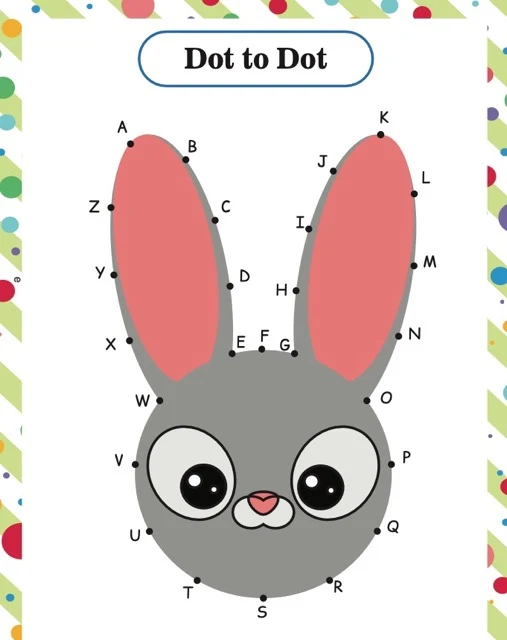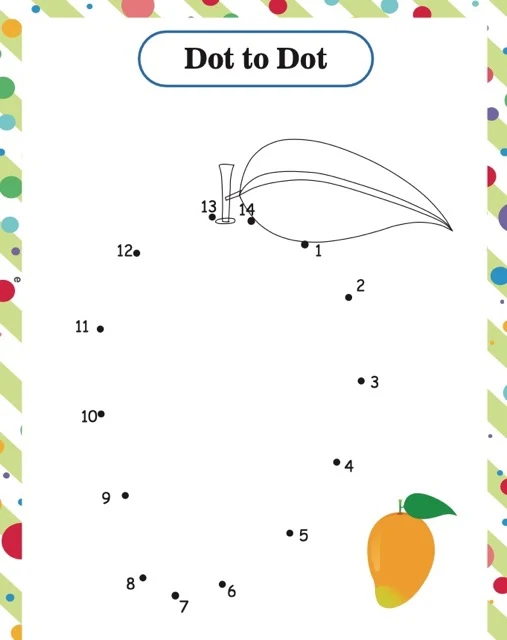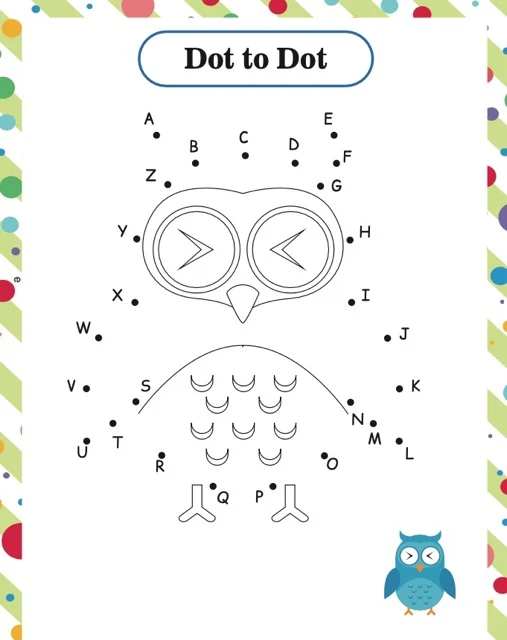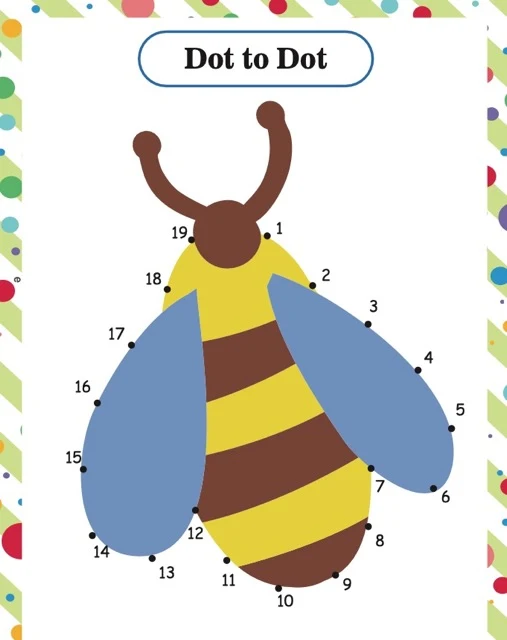Dot-to-Dot Activities: Educational Benefits for Young Children
This briefing document examines the educational benefits of dot-to-dot activities for young children, drawing from a guide, example activities, and research. Key advantages include improved fine motor skills, number recognition, focus, and spatial reasoning. The activities are adaptable to various subjects and learning styles, including those with special needs. Ease of access and engaging themes make them versatile tools for early childhood education, emphasizing gradual progression and positive reinforcement. The visual component shows the diverse complexity and applicability of the activities.
Dot-to-Dot Activities in Early Childhood Education
Briefing Doc: Dot-to-Dot Activities in Early Childhood Education
Overview:
This briefing doc summarizes information from three sources regarding the benefits and uses of dot-to-dot activities for young children. The sources consist of:
1.
Excerpts from "Dot-to-Dot Activities: A Comprehensive Guide" including study guides and FAQs.
2.
A visual document titled "Testing Theme: Dot to Dot.pdf" showcasing a collection of dot-to-dot activities.
Key Themes and Ideas:
●
Developmental Benefits: Dot-to-dot activities offer a multifaceted approach to early childhood development, enhancing:
○
Fine motor skills: "Children refine hand-eye coordination and pencil control" by connecting the dots.
○
Number recognition and sequencing: Children practice identifying and ordering numbers.
○
Concentration and focus: Following the numerical sequence requires sustained attention.
○
Visual perception and spatial reasoning: Connecting the dots helps children understand shapes and spatial relationships.
●
Educational Applications: These activities can be integrated into various subjects:
○
Math: Reinforce counting, number sequencing, and basic geometry.
○
Literacy: Activities featuring letters support alphabet learning.
○
Science: Reveal images of animals, plants, or other scientific concepts.
○
Social Studies: Introduce landmarks, historical figures, or cultural symbols.
●
Engagement and Accessibility:
○
Themes and colors: Engaging themes that align with children's interests, such as animals or holidays, and incorporating color enhance the learning experience.
○
Printable activities: Offer convenience and accessibility, being readily available, cost-effective, and customizable for individual needs.
●
Benefits for Children with Special Needs:
○
ADHD: The structured format can help with focus and task completion.
○
Fine Motor Difficulties: Strengthens hand muscles and improves coordination.
○
Visual Impairments: Larger dots and contrasting colors improve accessibility.
●
Importance of Gradual Progression and Encouragement: Starting with simple activities and providing guidance builds confidence. Focusing on effort and progress rather than perfection fosters a positive learning environment.
Visual Analysis:
The "Testing Theme: Dot to Dot.pdf" document visually reinforces the common theme of animals found in these activities. The varying complexity of the images, ranging from simple outlines to more detailed figures, suggests adaptability for different skill levels and age groups.
Conclusion:
Dot-to-dot activities provide an engaging and versatile tool for early childhood education. They support a range of developmental skills, can be integrated into various subjects, are readily accessible, and can be adapted to cater to diverse learning needs. By incorporating them into educational settings and providing appropriate guidance, these activities can foster a positive and enriching learning experience for young children.
Dot-to-Dot Activities: A Comprehensive Guide
Testing Theme: Dot to Dot FAQ
1. What is the target age range for these dot-to-dot activities?
The complexity of the designs and the number of dots suggest these activities are suitable for preschool and early elementary children, roughly ages 3-7. Younger children might need assistance with counting and fine motor skills.
2. What skills do dot-to-dot activities help develop?
Dot-to-dot activities are a fun way to develop several important skills in children:
●
Number Recognition and Sequencing: Children practice identifying and ordering numbers as they connect the dots.
●
Fine Motor Skills: These activities help refine hand-eye coordination and pencil control needed for writing and other tasks.
●
Concentration and Focus: Following the numerical sequence and completing the image requires sustained attention.
●
Visual Perception and Spatial Reasoning: Children develop the ability to perceive shapes and understand spatial relationships by connecting the dots to reveal the hidden picture.
3. Can dot-to-dot activities be used for educational purposes?
Absolutely! Dot-to-dot activities can be incorporated into lessons on various topics:
●
Math: Reinforce number sequencing, counting, and basic geometry concepts.
●
Literacy: Use dot-to-dot activities featuring letters to help children learn the alphabet.
●
Science: Connect dots to reveal images related to animals, plants, or other scientific themes.
●
Social Studies: Use dot-to-dot activities to introduce landmarks, historical figures, or cultural symbols.
4. Are there different difficulty levels for dot-to-dot activities?
Yes, the difficulty can be adjusted by:
●
Number of Dots: Fewer dots are easier for younger children, while more dots increase the challenge.
●
Spacing and Complexity of Lines: Closer dots and simple shapes are easier to connect, while widely spaced dots and intricate designs are more challenging.
●
Image Theme: Familiar and simple images are easier to recognize, while more abstract or detailed images may be more difficult.
5. How can dot-to-dot activities be made more engaging?
●
Use a Variety of Themes: Choose themes that align with children's interests, such as animals, vehicles, or holidays.
●
Incorporate Color: Encourage children to color the completed image or use different colored pencils for each number sequence.
●
Turn it into a Game: Challenge children to complete the dot-to-dot activity within a certain time or have them race against a friend.
●
Create Stories: Encourage children to tell a story about the image they have created, fostering creativity and language skills.
6. What are the benefits of using printable dot-to-dot activities?
●
Accessibility and Convenience: Printable activities are readily available online or can be easily created, making them a cost-effective and convenient learning resource.
●
Customization: Parents and educators can select activities tailored to specific learning objectives or individual children's needs.
●
Flexibility: Printable activities can be used at home, in the classroom, or on the go.
7. Can dot-to-dot activities benefit children with special needs?
Yes, dot-to-dot activities can be particularly helpful for children with:
●
Attention Deficits: The structured nature of the activity can help children with ADHD focus and complete a task.
●
Fine Motor Difficulties: Connecting the dots can strengthen hand muscles and improve coordination.
●
Visual Impairments: Using larger dots and contrasting colors can make the activity more accessible.
8. Are there any tips for helping children successfully complete dot-to-dot activities?
●
Start with Simple Activities: Begin with activities that have fewer dots and clear, easy-to-follow lines.
●
Provide Guidance: Point to the numbers and help children identify the next dot in the sequence.
●
Offer Encouragement: Celebrate their efforts and accomplishments, focusing on their progress rather than perfection.
●
Make it Fun! Keep the activity lighthearted and enjoyable to encourage a positive learning experience.
Dot-to-Dot Activities: A Comprehensive Guide
Dot-to-Dot Activities: A Study Guide
Short Answer Quiz
Instructions: Answer the following questions in 2-3 sentences each.
1.
What are two key skills that dot-to-dot activities help develop in young children?
2.
Besides number recognition, how can dot-to-dot activities be used to support literacy development?
3.
Give an example of how a dot-to-dot activity could be incorporated into a science lesson.
4.
Describe two ways to adjust the difficulty level of a dot-to-dot activity.
5.
How can using different colors enhance the engagement level of a dot-to-dot activity?
6.
What is one benefit of using printable dot-to-dot activities?
7.
How might dot-to-dot activities be beneficial for a child with ADHD?
8.
What type of dot-to-dot activity is best for beginners?
9.
Why is it important to offer encouragement rather than focusing on perfection when a child is working on a dot-to-dot activity?
10.
Based on the "Dot to Dot" source, what is a common theme found in these activities?
Answer Key
1.
Two key skills developed through dot-to-dot activities are fine motor skills and number recognition and sequencing. Children refine hand-eye coordination and pencil control while practicing identifying and ordering numbers.
2.
Dot-to-dot activities featuring letters can help children learn the alphabet. By connecting the dots in alphabetical order, children reinforce letter recognition and sequencing.
3.
In a science lesson about animals, a dot-to-dot activity could reveal an image of a specific animal being studied. This allows children to visually engage with the topic while practicing other skills.
4.
Difficulty can be adjusted by changing the number of dots or the spacing and complexity of lines. Fewer dots and simpler lines make the activity easier, while more dots and intricate designs increase the challenge.
5.
Using different colors can make the activity more visually stimulating and engaging. Children could use different colored pencils for each number sequence or color the completed image.
6.
Printable dot-to-dot activities offer accessibility and convenience. They are readily available online, cost-effective, and can be used in various settings.
7.
The structured nature of dot-to-dot activities can help children with ADHD focus and complete a task. Following the numerical sequence provides clear instructions and a sense of accomplishment.
8.
Simple activities with fewer dots and clear, easy-to-follow lines are best for beginners. This allows children to build confidence and master the basic concepts.
9.
Focusing on progress and effort encourages a positive learning experience and motivates the child to continue practicing. Emphasizing perfection can lead to frustration and discouragement.
10.
A common theme in the "Dot to Dot" source is animals. Many of the activities feature various animals, appealing to young children's interests.
Essay Questions
1.
Discuss the multifaceted benefits of using dot-to-dot activities in early childhood education, providing specific examples for different subject areas.
2.
Explain how dot-to-dot activities can be adapted to support the learning needs of children with specific disabilities or challenges.
3.
Analyze the importance of incorporating engaging elements, like themes and colors, into dot-to-dot activities to enhance learning effectiveness.
4.
Evaluate the role of printable dot-to-dot activities in promoting accessibility and convenience for both parents and educators.
5.
Compare and contrast the developmental benefits of traditional paper-based dot-to-dot activities with digital versions found on tablets or computers.
Glossary of Key Terms
●
Fine Motor Skills: The coordination of small muscles, such as those in the hands and fingers, used for precise movements like writing, drawing, and buttoning.
●
Hand-Eye Coordination: The ability to synchronize visual information with hand movements, crucial for tasks like catching a ball or writing.
●
Number Recognition: The ability to identify and name numbers.
●
Number Sequencing: The ability to arrange numbers in the correct order.
●
Spatial Reasoning: The ability to understand and manipulate the relationships between objects in space.
●
Visual Perception: The ability to interpret and make sense of visual information from the environment.
●
Printable Activities: Educational resources that can be printed on paper, providing a tangible learning experience.
●
ADHD (Attention Deficit Hyperactivity Disorder): A neurodevelopmental disorder characterized by difficulties with attention, impulsivity, and hyperactivity.
●
Accessibility: The ease with which something can be used or accessed by individuals with diverse needs.
●
Customization: The ability to modify or personalize something to meet specific requirements or preferences.
●
Engagement: The level of interest, motivation, and active participation in a learning activity.



















